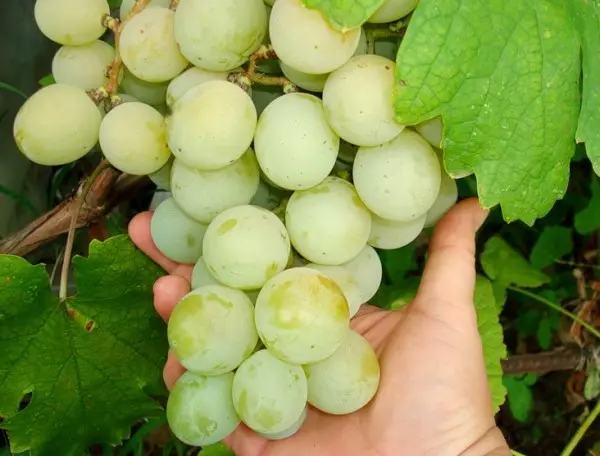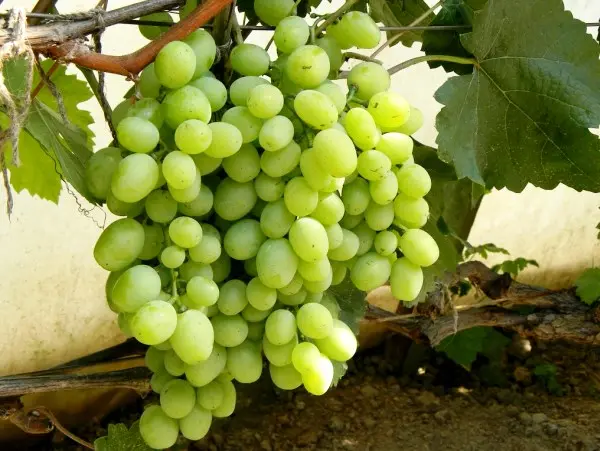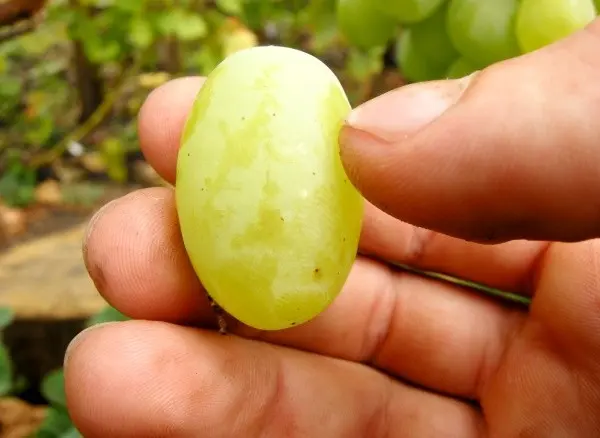Such a branch of science as breeding is becoming more and more popular in our time, performing a very important function: new varieties of plants are being developed that are most suitable for growing in a particular area. For example, grapes are very demanding on soil and climatic conditions. In the post-Soviet space, there are enough institutions dealing with such problems. All- Research Institute named after Ya.I. Potapenko deals with the problems of viticulture, and several dozen varieties have been bred in it, including the table grape Kesha, to which this article will be devoted.
Description
The Kesha grape variety belongs to early or mid-early varieties (ripens in 120-130 days). The bushes of the plant are distinguished by a significant growth force, with good ripening of the vine, the flower is bisexual (in the main species, in Kesh-1, it is female). Clusters of Kesha grapes can be of different shapes: conical, cylindric, sometimes they may not have a specific shape, with a long stem. They weigh quite a lot – from 600 to 900 g. White berries, also large, with an average weight of 10-12, usually oval. There are few bones, only 2-3. Characterized by dense pulp with a harmonious sweet taste. The sugar content is high – 22-25% (this property remains from the parent variety Vostorg), and the acidity is medium, about 6-8 hl.

Kesha grapes are productive, the number of fruitful shoots can be 75-80%, while the number of clusters per such shoot is 1,2-1,5. The Kesha grape variety can withstand frosts up to 23 degrees, has an average immunity to diseases (increased resistance only to mildew). As noted, this table variety is best consumed fresh, and it is not surprising that the tasting score for fresh fruits is very high.
Types
Kesha grapes have varieties. Inexperienced gardeners may not see the difference between Kesha-1 and Kesha-2, or think they are the same variety. The descriptions are very similar, but there are still some differences. We have already considered Kesha grapes, let’s move on to others.
Kesha-1 has other names, better known among the people – Talisman, Super Kesha. Firstly, it ripens in a later period (approximately in September), and secondly, the berries and clusters are larger and heavier (12-15 g and 800-1100 g, respectively). And it is also resistant to most diseases (whereas Kesha is only to mildew), the taste is almost identical.

Kesha-2 has even more names – Zlatogor, Tamerlane, Kesha nutmeg. It was bred by crossing the previous variety and Radiant Kishmish. This species, on the contrary, is very early, its ripening period is only 105-115 days. Conical clusters can gain weight up to 1200 g, no less large berries than those of Keshi-1, when ripe, acquire an amber color. Yes, and the taste is different due to the nutmeg flavor (from this one of the names appeared – Kesha nutmeg).
Features of agricultural technology
Kesha grapes do not require any super conditions for the normal development of plants, it is enough to adhere to the general requirements for planting and caring for this crop. He loves the sun, so you should choose an open place. Like most varieties, it is demanding on the ground – try to plant it in fertile soil (or pre-fertilized). Abundant watering is carried out in early spring, until the buds begin to open, the next – after flowering (approximately this is the end of May – the beginning of June). If drought – it is worth watering additionally. In addition to moisture, you also need top dressing. As a rule, potash-phosphorus fertilizers are applied, very little nitrogen is added, since an overdose of them can adversely affect the crop. Also, experienced gardeners recommend doing preventive treatments twice a year. Also, do not forget to form a crown – the vines are directed in length or around the base. Before the process of juice movement begins in the plants, pruning must be carried out.

An important stage in the care of Kesha grapes is the thinning of the bunches. Since the variety is very productive, it is necessary to prevent overload – control the number of bunches and pluck them when there is a lack of moisture.
Perhaps at first you will be confused which of the described types of Kesh grapes to prefer, because according to the description all are good, but it may be worth trying all three, and then, based on personal experience, choose what you like.
Video “Kesha grape variety”
This video contains a brief but capacious description of the Kesha white grape variety: the growing season, frost resistance, yield, etc.









